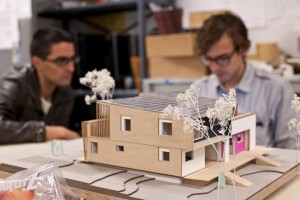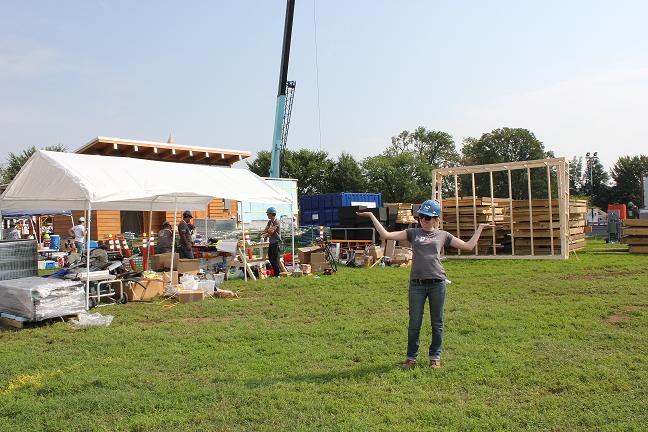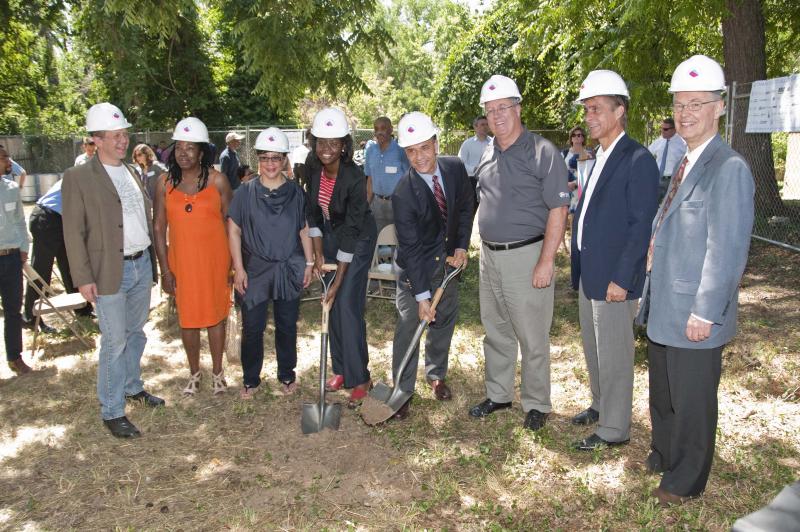Editor’s Note: This entry has been cross-posted from DOE’s Energy Blog.
In honor of the U.S. Department of Energy Solar Decathlon—which challenges 20 collegiate teams to design, build, and operate solar-powered houses that are cost-effective, energy-efficient, and attractive—we are profiling each of the 20 teams participating in the competition.
To kick things off, we spoke with Amanda Waal, architecture student and primary student contact for Empowerhouse—a joint venture between Parsons The New School for Design, Milano The New School for Management and Urban Policy, and Stevens Institute of Technology.

The Empowerhouse design model (Courtesy of Lisa Bleich)
The three-school team is jointly based out of the schools’ Manhattan and Hoboken campuses and has partnered with Habitat for Humanity of Washington, D.C., and the D.C. Department of Housing and Community Development to build a passive house that will require 80% less energy for space heating and cooling than an ordinary home.
The team’s design, which it has aptly dubbed Empowerhouse, will actually consist of two homes that the team began designing during the fall semester of 2009. The first is a 1,000-ft2, one-bedroom home with a 300-ft2 accessible roof garden, which will be showcased at the National Mall’s West Potomac Park in Washington, D.C., this fall. A second home will be constructed in partnership with Habitat for Humanity in the D.C. neighborhood of Deanwood, located in the District’s Ward 7. At the conclusion of the Solar Decathlon, the house on the National Mall will be moved to Deanwood, expanded into a two-bedroom unit, and joined with the second unit to create a two-family home.
Although each unit is designed to be sustainable on its own, the house will achieve peak energy efficiency when joined together. Amanda told us that the team’s ultimate goal is to bring its knowledge of energy-efficient building technologies to create a new model for Habitat for Humanity.
“This is an incredible project—we’re actually making a home for a family to live in. This is an opportunity that most students in our fields would rarely get to experience,” she told us. “Being able to partner with the Deanwood community and Habitat for Humanity has been really rewarding.”

Empowerhouse team member Obinna Elechi (right) speaks with a Deanwood community member (Courtesy of Sharon Farmer)
At the same time, the team’s innovative community-based approach to the competition means it also faces unique challenges. Amanda said that although the team is excited about the house’s eventual placement in Deanwood, it is also experiencing real-world challenges homebuilders face every day. The team must take into account neighborhood and city codes, and the design must be able to withstand the stress of being built on the National Mall, taken apart, moved across town, and then reconstructed in its neighborhood with its second half—all while still retaining its ability to function effectively as an energy-efficient home.
For more information about the Empowerhouse team, visit its Web site or official Facebook page.
April Saylor is an online content producer and contractor to the U.S. Department of Energy’s Office of Public Affairs.





